Introduction: This blog post is about the very common fungal pathogen of strawberry, powdery mildew. What follows is a review on the biology and management of this disease.
Causal Organism: Powdery mildew is caused by the pathogen that historically has been named Sphaerotheca macularis f. sp. fragariae. However, future scientific publications and other writings will likely use the new name Podosphaera aphanis. Like most powdery mildew pathogens on other hosts, the majority of the mycelium of this fungus grows on the outside of strawberry leaves and fruit. The masses of mycelium produce spores (conidia) that form in chains, are barrel shaped, whitish to clear (hyaline), and dry (Photo 1). If your vision is sharp, you could be able to see the spores with the unaided eye since powdery mildew conidia are relatively large compared to spores of other fungi. With a hand lens or dissecting microscope, chains of powdery mildew conidia are readily seen.
Symptoms: Powdery mildew appears as white patches of fluffy mycelium tending to infect the undersides of younger leaves first. If conditions favor the fungus, then the disease advances onto the top sides of these leaves; in severe cases, powdery mildew moves onto older leaves, petioles, flowers, and fruit. It is important not to confuse these initial, small white patches of mildew with the waxy white deposits produced by whiteflies during egg laying (Photo 2 and 3). Mildew infections eventually result in an upward curling of infected leaves. On some cultivars, such as Camarosa, a brown to purple blotchy discoloration forms on the upper leaf surface (Photo 4) . Mildew infections of immature fruit result in a small, unripened fruit. Powdery mildew infections of mature fruit are more obvious due to the white mycelial growth on the surface and the protruding seeds (Photo 6); if such fruit are eaten they can have a distinctive moldy taste.
Disease Cycle: It is believed that in California the majority of powdery mildew inoculum infecting first year strawberry plantings comes from the leaves or crowns of transplants. Such transplants are either carrying inoculum on them from the nursery or are already infected prior to being dug. In addition, second year or volunteer strawberries in the vicinity are likely to be infected with powdery mildew; these established plants provide a second source of spore inoculum that is carried by winds to new plantings. The powdery mildew fungus produces overwintering, sexual structures called chasmothecia (previously these were called cleistothecia) but these do not commonly form on strawberry grown in California and therefore do not appear to have an important role in disease development.
Epidemiology: Powdery mildew has certain conditions in which it thrives. A range of temperatures from 60o to 80o (15o to 26.7o C) during periods of moderate to high humidity (think fog) are the conditions which are optimum for powdery mildew growth. In addition, the fungus actually does not grow well if leaves are wet with free moisture. So the fungus develops more readily if strawberry foliage is dry.
Management: As fully as possible, an integrated pest management (IPM) approach is suggested when it comes to controlling any strawberry disease. Fungicides are a key IPM component for minimizing powdery mildew infection in strawberries on the Central Coast of California. There is a wide selection of fungicides available for use on strawberry (http://www.ipm.ucdavis.edu/PMG/r734100711.html). Examples of such products are myclobutanil (Rally), triflumazol (Procure), pyraclostrobin + boscalid (Pristine) and quinoxyfen (Quintec). There are concerns of reduced sensitivity of the pathogen to several classes of these fungicides, but there is no hard evidence of resistance to any of them to date. It is worth noting that there are no reports of reduced efficacy of sulfur (both as a dust and flowable) despite the many years it has been used against powdery mildew. Many horticultural oils and insecticidal soaps (for example M-Pede) can also be effective for powdery mildew when applied at a frequency of every 10 to 14 days, but it should be pointed out that frequent applications of these oils or soaps can stress strawberries and reduce plant productivity while also reducing mildew.
To maximize the efficacy of fungicides used, one should begin applying these materials at the first sign of disease, which on the Central Coast can be as early as February or March and continue as favorable conditions for mildew growth continue.
Since a large portion of the powdery mildew initially infecting strawberry fields comes from the transplants, growers should make sure they are receiving clean plants. It is standard practice in the California strawberry nursery industry to apply a high number of protectant treatments for powdery mildew, but growers concerned about powdery mildew coming from nursery plants are encouraged to check with their provider to understand mildew management practices.
Genetic resistance to fungal diseases is an important aspect of disease management. While there is no complete resistance to powdery mildew in strawberry, there is still a wide range of susceptibility to the disease among the varieties grown in California, a discussion which is beyond the scope of this post. Growers are well advised to be aware of the relative susceptibility for disease in the varieties they are planting, especially if growing in an area known to be problematic for powdery mildew. Also, growers should perhaps avoid planting a very susceptible cultivar adjacent to a second year strawberry field.
The above has been a discussion the biology and management of powdery mildew disease in strawberry. There are pesticides mentioned for the management of powdery mildew on strawberry in this article. Before using any of these products, check with your local Agricultural Commissioner’s office and consult product labels for current status of product registration, restrictions and use information.
Attached Images:
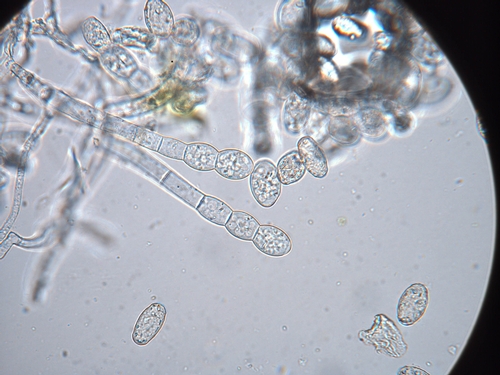
Photo 1: View of the powdery mildew pathogen under the microscope. Photo courtesy Steven Koike.
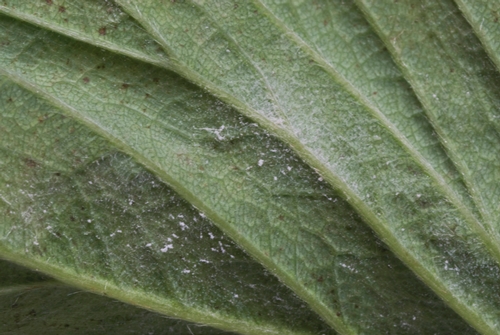
Photo 2: Close up of powdery mildew on a strawberry leaf. Photo courtesy of Steven Koike.
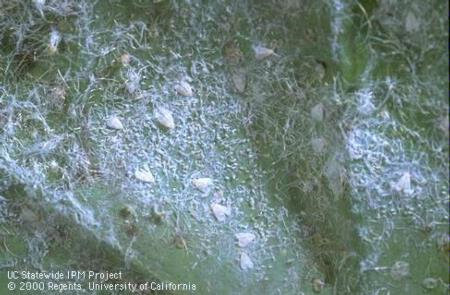
Photo 3: Waxy material in association with whitefly eggs. Please do not confuse these with powdery mildew.
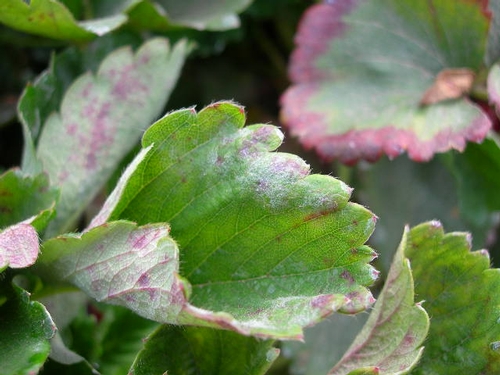
Photo 4: Powdery mildew on leaf of 'Camarosa' variety strawberry. Note the leaf curling and association with purple blotches. Photo by Mark Bolda.
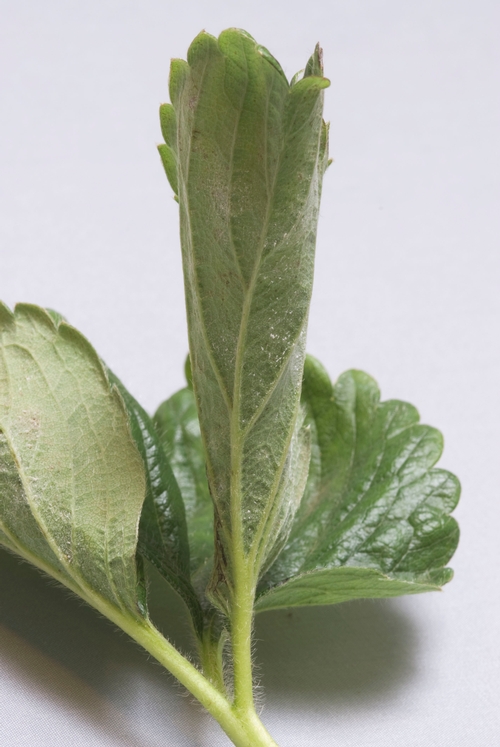
Photo 5: Powdery mildew on young strawberry leaf. Photo courtesy Steven Koike.
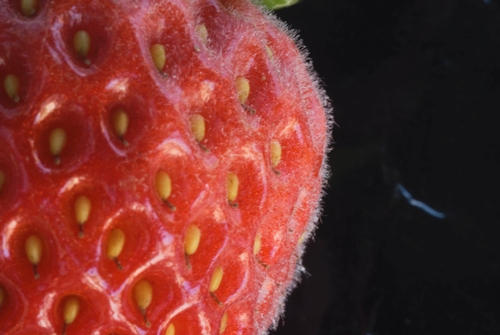
Photo 6: Side view of powdery mildew on strawberry fruit. Photo courtesy Steven Koike.